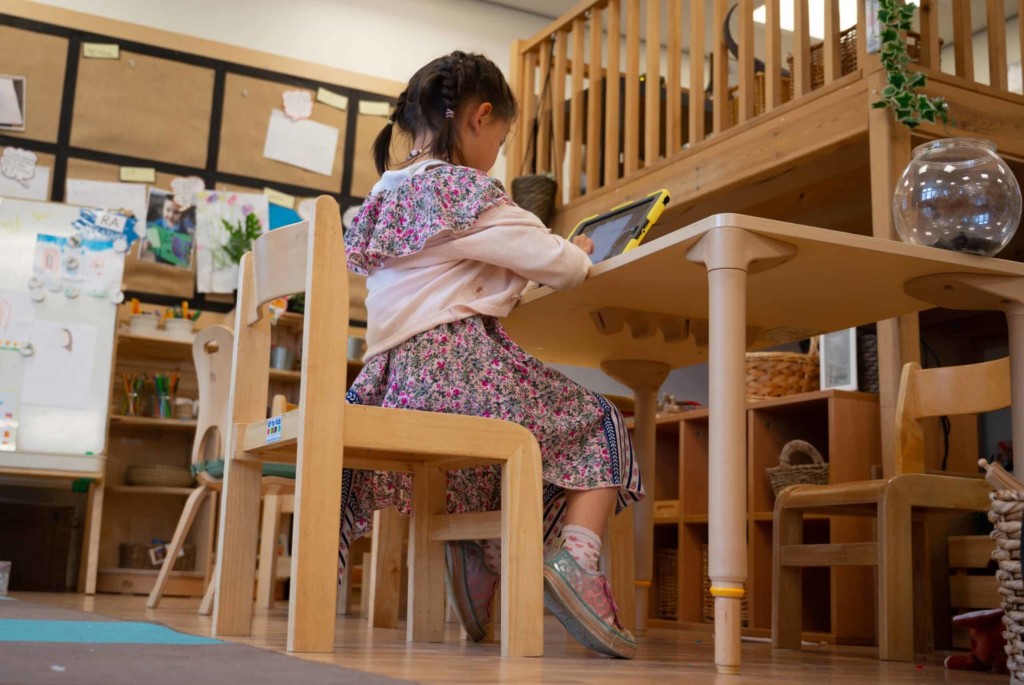Addressing the Challenges of Remote Learning for Emergent Bilingual Students

Remote instruction is a particular challenge for emergent bilingual students or English learners (ELs). Many of the language supports and resources that emergent bilingual students rely on in the classroom are as accessible, including physical responses, word walls, gestures, and turning to a partner. Face-to-face interactions are critical for these students. It has been recognized that emergent bilingual students learn a language when they engage in conversations. Not only do live interactions build critical relationships, but they also support social and emotional development, student engagement, and ultimately student achievement.
Maintaining a robust curriculum for emergent bilingual students during remote instruction is difficult but utilizing high-interest texts is important. Students can see themselves and others in authentic texts that show cultural diversity. Teachers can also promote high engagement by building on the students’ interests with engaging visual and auditory resources.
Evidence-based Practices for Remote Learning
The following recommendations support teachers to refocus successful strategies in teaching emergent bilingual students in the classroom, modify evidence-based practices to online learning, and reimagine a system where ELs can demonstrate success.
- For students to continue to thrive during remote learning, requires rigorous and age-appropriate assignments that utilize compelling and interesting content. Teachers should use scaffolding strategically – without removing the struggle needed to build capacity. Emergent bilingual students will be engaged if they learn through quality, complex lessons.
- Emergent bilingual students need to learn how English works through the development of phonemic awareness, vocabulary, and sentence structure. Phonics instruction is also critical to build decoding skills. To the extent possible, incorporate visual and auditory resources when offering tailored and personalized support for each student.
- Language develops within the context of building knowledge about something. Provide activities that build academic language connected to the content. Practice new vocabulary within a range of content areas. To maximize engagement, have students participate in academic literacy activities that positively reflect their heritage cultures and build intellectual capacity.
- Strong relationships between school and home help strengthen students’ learning. We must develop trusting relationships with families and support social-emotional learning needs as we celebrate students and create a positive learning community.
Increasing Engagement and Closing Language Gaps
It takes time for emergent bilingual students to develop their English language skills, and so it is crucial to keep students actively reading and speaking during remote or hybrid learning. There are two groups of skills that are part of English language acquisition:
- BICS: Basic Interpersonal Communication Skills
- CALPS: Cognitive Academic Language Proficiency
BICS can generally be acquired quickly through interaction with students’ peers. On the other hand, CALPs generally takes from five to seven years and are acquired in an academic setting.
Here are some ideas to develop BICS during remote learning:
- Teachers can encourage students to work together outside of “Zoom” time.
- Students can collaborate on homework assignments by being on a 1:1 video call with a friend.
- Students can hang out or play with a friend on a 1:1 video call.
- Suggest that students use the target language when working on homework together.
Here are some ideas to develop CALPS during remote learning:
- If parents are not fluent in English, teachers can encourage them to speak their first language with their children. Research suggests that reading at home and discussing history, politics, or science in a broadway contribute to the development of academic language. Developing academic language in their first language helps emergent bilingual students develop academic language in their target language.
- Teachers can develop strategies to have learners do most of the talking on Zoom calls.
- Students can use Zoom “rooms” to pair-and-share.
- Teachers can ask students questions ahead of time to allow students to think about and plan their responses—or structure this as a pair-and-share conversation that students can report on when they come back to the group.
Technology Solutions for Emergent Bilinguals
As educators address the COVID-19 slide in this new school year, our programs can provide important support as teachers reorient their classroom teaching to a virtual environment, including hybrid models.
- Live interactive instruction is available through an Adaptive Blended Learning model.
- A robust curriculum in authentic texts shows cultural diversity and builds content knowledge.
- Progress monitoring and an embedded assessment tool close learning gaps.
- Professional learning provides opportunities for EL teachers to develop new skills.
- Lessons facilitate social interaction.
- Learner dashboards allow for student choice as they are encouraged to take risks and persist in activities when they fail in a safe, private, and nonjudgmental environment.
- Tailored support leads to learning acceleration and allows teachers to modify instructional intensity.
Our comprehensive literacy solutions—Core5, PowerUp, and Rosetta Stone English—provide emergent bilingual students the same opportunity to be successful learners as their native English speaking peers. Particularly during the duration of COVID-19 related remote learning, emergent bilingual students will benefit from the research-proven elements of literacy programs.
For more, see:
- Getting Clearer: Schooling Less, Not Learning Less
- Kim Smith on Creating Schools, Companies and the Pahara Institute
José Viana is the former Assistant Deputy Secretary in the office of English Language Acquisition at the U.S. Department of Education. He is now a Senior Education & Outreach Specialist for Lexia Learning.
Stay in-the-know with innovations in learning by signing up for the weekly Smart Update.






0 Comments
Leave a Comment
Your email address will not be published. All fields are required.